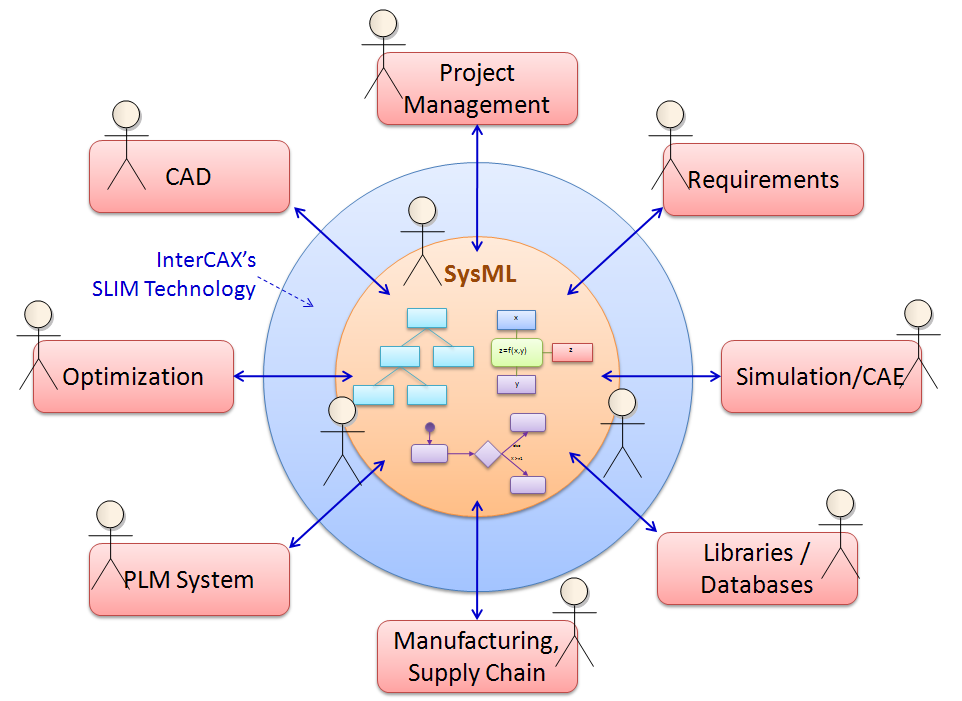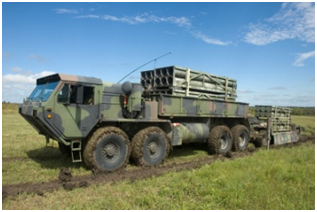Managing the development and deployment of complex systems can no longer depend on ad-hoc collections of independent documents. The ability to increase system performance and reliability, control costs, keep to schedules, and respect organizational governance rules requires a new approach. A new body of practice, Model-Based Systems Engineering (MBSE), is emerging to meet these needs.
MBSE starts with a “touchstone of truth”, a computer model of the system that:
- Can federate all the information about the system,
- Is accessible to every project participant,
- Provides traceability as the model changes,
- Enables analysis and simulation from the earliest stages, and
- Can generate all required documents as needed.
No single software tool can meet all these needs. MBSE uses an integrated framework of existing engineering tools and data sources, centered on a core model. SysML (Systems Modeling Language) is a powerful vehicle for building and linking this core model. Intercax’s SLIM technology enables system engineers to drive workflows (simulation, trades, V&V) and federate engineering models directly from the SysML-based core model.

InterCAX helps its customers get started in MBSE by providing:
- SysML-based simulation and integration products
- Training in MBSE best practices, SysML and other subjects
- Coaching to architect MBSE environments
- Standard and custom software tools for an integrated MBSE environment
- Consulting on model building, library creation and simulation
Customers can choose individual products and services, or a complete customized program, to get themselves up to speed quickly with an approach that meets their unique needs.
References
- Satellites to Supply Chains, Energy to Finance — SLIM for Model-Based Systems Engineering, Part 1: Motivation and Concept of SLIM (pdf)
- Satellites to Supply Chains, Energy to Finance — SLIM for Model-Based Systems Engineering, Part 2: Applications of SLIM (pdf)
Applications
Model-Based Systems Engineering and Intercax can help address major challenges in many domains:

Aerospace
- Managing long-term, multi-partner development projects
- Integrating disparate engineering and scientific disciplines
- Exploring and evaluating novel technologies

Defense
- Supporting rapid changes in military missions
- Providing adaptable and trustworthy systems
- Identifying cost, delivery and performance problems

Automotive and Industrial
- Integrating mechanical, electronic and software components
- Managing high-mix configuration environments
- Addressing regulatory mandates for safety, mileage, etc.

Energy
- Designing and deploying alternative energy sources
- Configuring and simulating Smart Grid systems
- Evaluating economic and environmental impacts

Infrastructure and Environment
- Managing integrated infrastructure development projects
- Planning for system resilience under environmental stressors
- Assessing sustainability of manufacturing processes, urban systems

Business and Finance
- Modeling global supply chains for cost, agility and robustness
- Simulating high-throughput SOA business processes
- Monitoring Sarbanes-Oxley and other corporate governance issues
- Evaluating bank risks
 Intercax
Intercax Intercax
Intercax